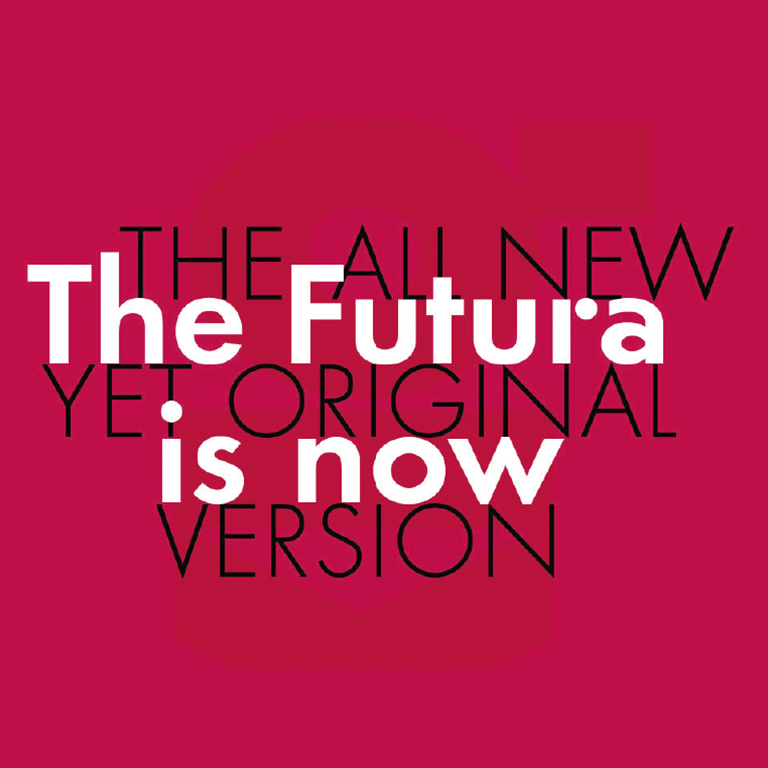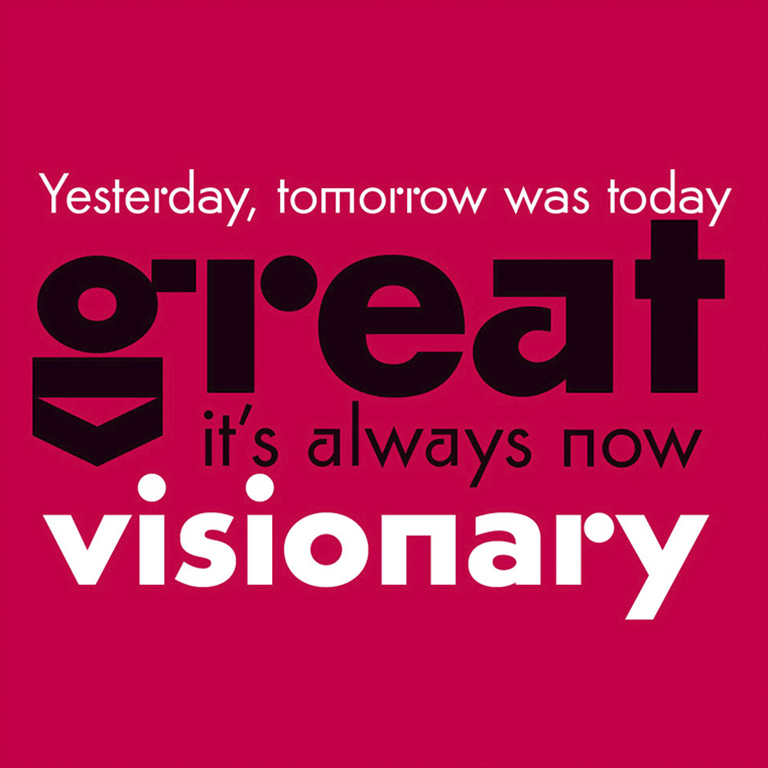90 languages
FUTURA ND ALTERNATE
The genuine Futura, which takes up Paul Renner’s earliest sketches and brings back to life the original stylistic alternatives of the letters a, g, m and n. Another of its peculiarities are the curved ends of the j, l and t. It retains its genetic heritage, maintaining a perfect geometry, but with a fresher air than ever.
Futura is a Trademark of BauerTypes SL




20 INDIVIDUAL STYLES
Available for DESKTOP | WEB | APP | ePub | SERVER | OEM licences
LICENSES
DESKTOP
The Desktop license allows you to install the fonts on the number of computers (CPU’s) for which the license has been purchased and use them in the programs installed on the computer. It allows you to create documents, static images, presentations or layouts for printing or publishing.
WEB
The web license allows you to use the fonts in web environments, in the purchased domains and for a period of time that will be renewed at the end of the contract. The range of use depends on the number of web users, number of visits, server or domains, among other variables.
OEM license
An individual OEM product license with licensing contract (stipulated by NDA [non-disclosure agreement]). This license is required for products in which the typographic software (fonts or parts of the fonts) is combined with hardware or software created or programmed by the OEM, such that it appears as its own product.
APP
The mobile apps license permits integration of fonts on the iOS, Android, and Windows RT platforms. Each license is specific to a single platform and is valid for the application’s entire lifespan. Acquiring new licenses is not necessary for free updates, If the font is not integrated directly in the app, for example if it is used to create a static image, you will need a desktop font license.
ePub
The electronic publications license permits integrating a font into electronic documents such as e-books or electronic magazines or newspapers. Each license is valid for a single title, for the duration of its functional lifespan. If the font is not integrated directly into the electronic publication, for example if it is used to create a static image such as the cover of an e-book, you will need a desktop font license.
SERVERs
The server license permits installation of fonts on servers accessible to remote users and webpage visitors. Users must not download typographical data or use it outside of the server. The font should not be used on a SAAS (software as a service) application, where the service is in fact the product, rather than the medium used. A server license covers a specific number of production servers on which the font is installed.
third parties
This license allows you to share the typography with co-agents, advertising or branding agencies, developers or other external collaborators. This will be a desktop license and the range will depend on the number of computers required.
COMmERCIAL
Although it may seem confusing, a commercial license is nothing more than a distribution license for products that, in their design, the licensed typography provides a differential value. Products such as clothing, merchandising or packaging, are considered to need a separate license because of the differential value that the typography can provide
digital marketing
This license allows you to publish marketing actions at a digital level, including ads on social networks, automated campaigns and other advertising elements. The rank depends on the number of impacts of the campaign. The own social media publications use a separate license.


INFO
LANGUAGES
A afrikáans · albanés · alemán, bajo alemán · arvanítico [latin] · asturiano B bácico [latin] · bislama · bosnio [latin] · bretón C casubio · catalán · chamorro · checo · croata D danés E eslovaco · esloveno · español · estonian F feroés · finlandés · franco-provenzal · francés · frisón, frisón occidental, frisón oriental, frisón septentrional · friulano G gaélico escocés, gaelico manés · gallego · groenlandés H holandés · húngaro I indonesio · inglés · islandés · interlingua · irlandés · italiano J judeo-tat K karaim [latin] · kurdo [latin] · kurmanji L ladino · luxemburgués M malayo [latin] · malgache · marshalés · moldavo [latin] N noruego: Bokmål, nynorsk O occitano P pilipino (tagalo) · polaco · portugués R retrorromance · romanche · romaní · rumano S sami inari, sami lule, sami meridional, sami septentrional, sami ume · samoano · serbio [latin] · sesotho austral, sesotho septentrional· somalí · sorabo: bajo sorabo, alto sorabo · sueco T tahitiano · tártaro: tártaro de Baraba, tártaro de Crimea [latin], tártaro de Kazan [latin] · tongano · tsakhur [latin] · tsonga · tsuana · turco U ubijé V valón · våmhusmål · vasco · vepsio X xhosa Y yapés Z zulú.
ABOUT
The Futura ND Alternate is a geometric sans that consists of 20 individual styles, with 90 language coverage and many other OpenType features. It has access to the original stylistic alternates, discretionary and standard ligatures. Its wide variety of styles and weights are designed true to its origins and make it especially suitable for prominent user interfaces, information displays, smart watches, e-readers, television applications, technical devices and Internet-related uses.
In 1927 the Bauersche Giesserei in Frankfurt am Main (Germany) presented for the first time 3 varieties of a new typeface, the thin, demiblack and black Futura, designed by Paul Renner, a prolific typography writer and director of the Master Craftsmen’s School for Printer’s in Munich. It soon became one of the most widely used typefaces in the world. It continues to play a key role in the corporate image and identity of the most innovative companies. The world’s leading players, designers and graphic artists love simple geometric forms and powerful lettering.




